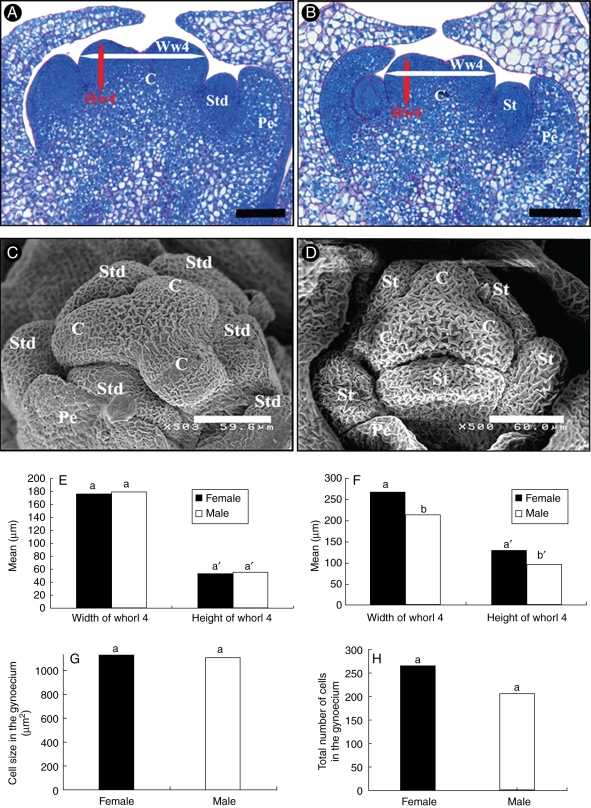Fig. 4.
Biometric analysis of flower bud immediately after the initiation of organ primordia (stage V). (A) Longitudinal section of ‘bisexual’ pistillate flower bud at stage V. (B) Longitudinal section of ‘bisexual’ staminate flower bud at stage V. (C) SEM observation of pistillate flower bud at ‘bisexual’ stage showing the emergence of three carpel primordia in a triangular shape in the inner whorl and six stamens at their periphery. (D) SEM observation of staminate flower bud at ‘bisexual’ stage V. (E) Histogram of mean widths and heights of gynoecium in staminate and pistillate flowers at stage IV; no significant difference is observed in width (P = 0·45, n = 9) or height (P = 0·54, n = 9). (F) At ‘bisexual’ stage V, carpel widths (P = 0·0016, n = 10) and heights (P = 0·0005, n = 10) are significantly different, the gynoecium of pistillate flowers being on average larger than that of the staminate flower. (G,H) Histogram of mean cell sizes (G) and total number of cells (H) as measured from median sections in both staminate and pistillate primordia. The results revealed no significant difference in cell size (P = 0·59, n = 5) while the two gynoecium primordium types displayed a significant difference in total cell number (P = 0·0001, n = 5) Abbreviations: C, carpel; Pe, petal; St, stamen; Hw4, height of whorl 4; Ww4, width of whorl 4. Means with the same letter are not significantly different. Scale bars: (A, B) = 100 µm.

